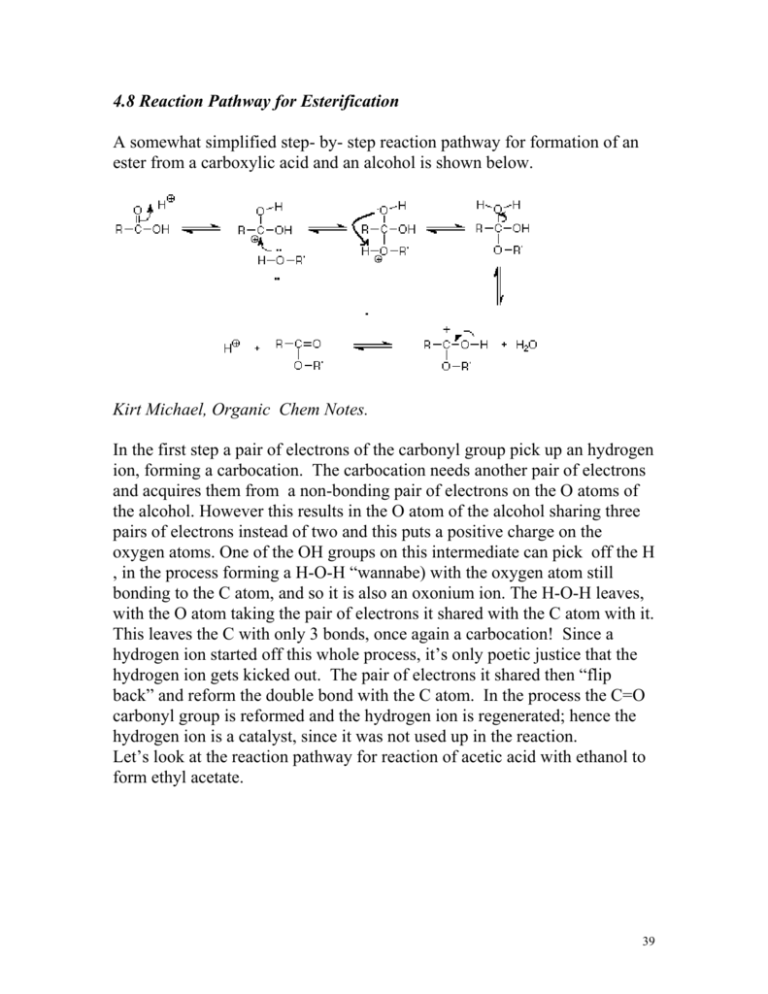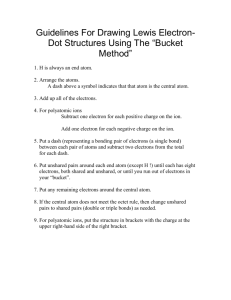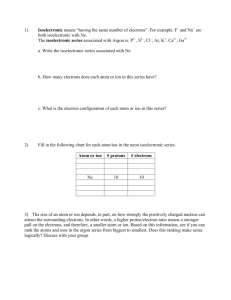4.8 Reaction Pathway for Esterfication
advertisement

4.8 Reaction Pathway for Esterification A somewhat simplified step- by- step reaction pathway for formation of an ester from a carboxylic acid and an alcohol is shown below. Kirt Michael, Organic Chem Notes. In the first step a pair of electrons of the carbonyl group pick up an hydrogen ion, forming a carbocation. The carbocation needs another pair of electrons and acquires them from a non-bonding pair of electrons on the O atoms of the alcohol. However this results in the O atom of the alcohol sharing three pairs of electrons instead of two and this puts a positive charge on the oxygen atoms. One of the OH groups on this intermediate can pick off the H , in the process forming a H-O-H “wannabe) with the oxygen atom still bonding to the C atom, and so it is also an oxonium ion. The H-O-H leaves, with the O atom taking the pair of electrons it shared with the C atom with it. This leaves the C with only 3 bonds, once again a carbocation! Since a hydrogen ion started off this whole process, it’s only poetic justice that the hydrogen ion gets kicked out. The pair of electrons it shared then “flip back” and reform the double bond with the C atom. In the process the C=O carbonyl group is reformed and the hydrogen ion is regenerated; hence the hydrogen ion is a catalyst, since it was not used up in the reaction. Let’s look at the reaction pathway for reaction of acetic acid with ethanol to form ethyl acetate. 39 Go through and explain what is happening in each step of the above reaction, based on the general explanation given above. Show the complete reaction pathway for the following reactions: a) Butanoic acid and methanol with acid catalyst b) Acetic acid and cyclohexanol with acid catalyst c) Propanoic acid and ethanol with acid catalyst d) 5-hydroxypentanoic acid All of the above reactions are reversible and so ester hydrolysis with water back to a carboxylic acid and alcohol can occur by the same reaction pathway in reverse. The reaction pathway for methyl acetate is shown. 40 Try doing the reaction pathway for the hydrolysis of a) ethyl formate b) propyl butanoate c) butyl acetate d) 41







